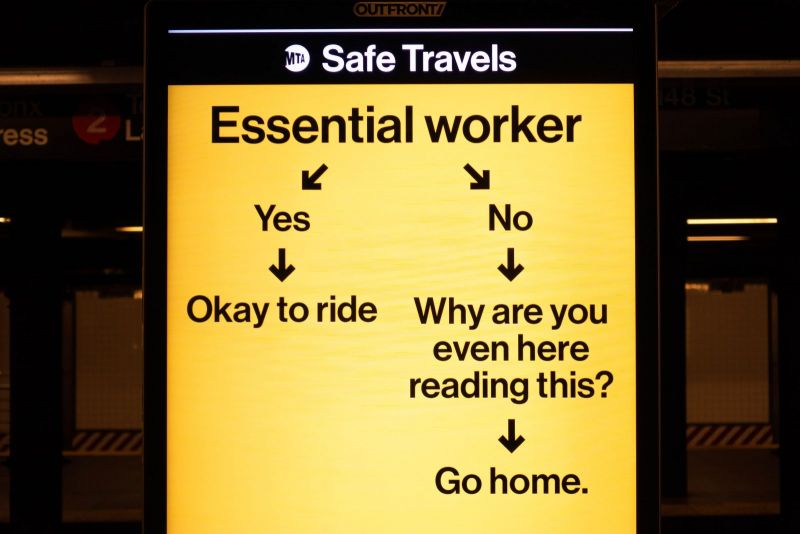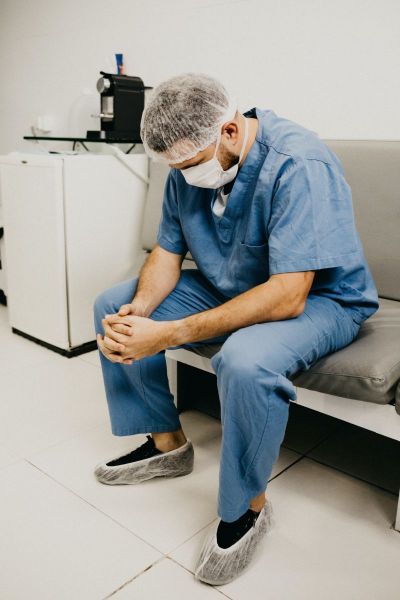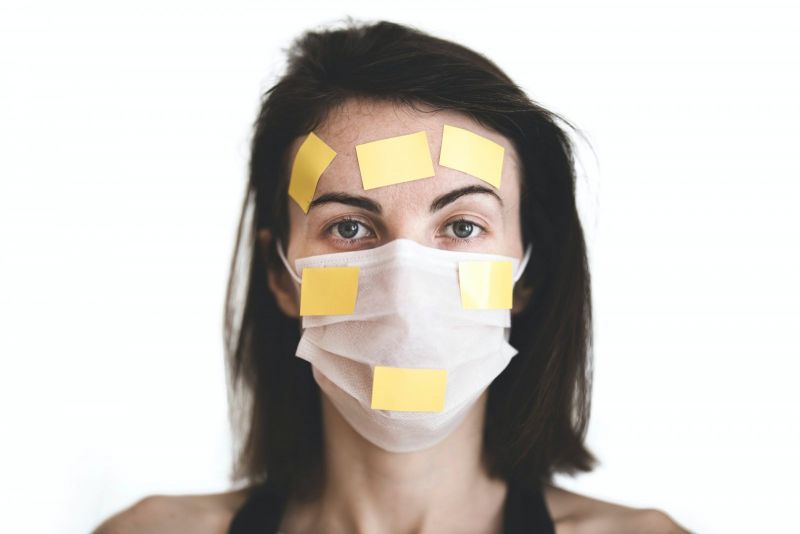Physician Hospital Guidance for COVID-19
Physicians: Hospital Guidance
Keep COVID-19 from entering your facility
The greatest COVID-19 risk comes from the movement of persons into and out of your facility. Anyone who leaves and then returns to your facility can potentially bring COVID-19 into your facility.
Restrict visitors
* Restrict all visitors from entry into the facility. This includes spouses, immediate family, and nonessential health care workers. The only exception is for compassionate care situations (e.g., end of life).
* When a resident spends time with a visitor for a compassionate visit, even if outdoors on facility grounds, they must remain at least six feet apart.
* Restrict all volunteers and nonessential health care personnel (HCP), including consultant services (e.g., barber).
* Develop processes to help residents and family members remain connected, including facilitating resident access to virtual visits by phone and other electronic devices.
* Assist families with placement of electronic monitoring devices if requested.
* Make a plan to ensure regular communication with families and residents.
Actively screen staff
Actively screen all staff for fever and symptoms of illness before starting each shift. In addition to facility staff, conduct health screening for other essential health care personnel including therapy personnel, hospice, home care, dialysis, ombudsman, state surveyors, chaplain at end of life, mortician, etc.
[Active screening means that a trained person should physically monitor temperature of staff entering the building and ask questions regarding other COVID-related symptoms.]
* Conduct active assessment for fever (measured temperature >100.0oF) or subjective fever (chill, feeling feverish).
* Ask about new symptoms of illness (e.g., measured or subjective fever, cough, shortness of breath, chills, headache, muscle pain, sore throat, or new loss of taste or smell).
* Consider further evaluation for fever <100.0oF, or other symptoms not attributable to another diagnosis, including, nausea, vomiting, diarrhea, abdominal pain, runny nose, and fatigue.
* Staff of LTC facilities are a priority group for COVID-19 testing in Minnesota and symptomatic staff should be tested as soon as possible.
* A sample paper form for documenting staff screening is provided in Appendix A.
* An electronic Employee Illness Tracking Tool and instructions are available at long-term care: COVID-19
Staff should not work while sick. If illness develops while at work, staff must immediately separate themselves from others, alert their supervisor, and leave the workplace.
All staff should wear a mask at all times when in the facility and practice strict hand hygiene.
Employees participating in universal masking initiatives will wear different facemasks, depending on their potential exposure to residents with COVID-19 and their job responsibilities.
Medical grade surgical masks should be prioritized for direct-care personnel if they are in short supply.
Institute use of eye protection (e.g., face shield, goggles, safety glasses with side shields) during all resident care encounters, when personal protective equipment (PPE) supplies allow.
Use of appropriate PPE can reduce staff exposures that might occur before detection of a COVID-19 case (e.g., when working with infected but asymptomatic resident or co-worker) that might lead to exclusion from work.
All staff should practice social distancing (≥6 feet from others) when in break rooms or common areas.
There have been clusters of staff illness in health care settings associated with lack of social distancing in nonresident care areas.

Limit and monitor resident transport out of facility.
Cancel all field trips to locations outside of the facility.
Special considerations should be given to residents who must leave the facility for medically necessary purposes (e.g., hemodialysis).
* Residents should wear an alternative (cloth) mask when they leave their room and when traveling via resident transport services.
* Develop a process to ensure communication about inter-facility transfer (including EMS) of residents with confirmed or suspected COVID-19. Communicate with any transport services ahead of time if a resident with suspected or confirmed COVID-19 needs transport.
* Screen residents for fever and new respiratory symptoms (cough, shortness of breath) when going offsite for dialysis or other medical appointments and within one hour of returning to the facility.
* Alert the receiving facility ahead of time if there is COVID-19 in the facility. Dialysis centers may adjust the resident’s schedule due to possible exposure to COVID-19.
* If a resident with respiratory symptoms, or who is COVID-19 positive, needs dialysis, work with the dialysis center to develop a plan. The goal is to put in place infection control measures, and to adjust the resident’s dialysis schedule to accommodate the dialysis center’s protocol of treating residents with respiratory symptoms or COVID-positive status.
* If a resident leaves the facility to stay with a family member, exposures to persons with COVID-19 cannot be ruled out. Upon the resident’s return, the resident must be quarantined in a private room with a private (not shared) bathroom. The CDC defines quarantine as the separation of people who may have been exposed to a contagious disease. With coronavirus, the recommended period to self-quarantine is 14 days.
* Because of the quarantine implications, we recommend that residents do not leave the facility campus during this time of COVID-19 community transmission (e.g., when the source of COVID-19 infection cannot be traced). This does not mean residents cannot go outside for fresh air. Residents should wear a cloth mask as tolerated when they go outside and should maintain social distancing.
Make a plan for action
Utilize your All Hazard Plan/Emergency Operations Plan
Federally certified skilled nursing facilities should implement their All Hazard Plan/Emergency Operations Plan as required by the Emergency Preparedness Rule. Find details at CMS
Complete the COVID-19 Action Plan for health care facilities The MDH: COVID-19 Action Plan for Congregate Settings can be used to identify who on your staff will be responsible for taking certain COVID-19-specific actions and by what date.
* The tool will also lead to recognition of actions where you have not yet defined steps or a responsible person.
* Everyone in the organization, including organizational leadership, needs to be involved in creating, supporting, and disseminating the COVID-19 Action Plan.
* If you need infection prevention and control assistance in your preparation, MDH: Infection Control Assessment and Response Program (ICAR) website has resources and contact information.
* Engage in conversations with residents, their families, and their primary care providers to ensure all residents have opportunity to develop POLST (Physician Orders for Life Sustaining Treatment) and advanced directives. Providers should address COVID-specific risk factors and care decisions to ensure the resident’s wishes are followed in case of infection.

Know what PPE you need and how much you have available
PPE is a cornerstone of efforts to prevent transmission of COVID-19 within a LTC facility. LTC facilities must have access to recommended PPE and provide clear guidance and training for staff on optimization of PPE supplies.
Cloth/alternative masks are not PPE and should not be worn by HCP when PPE is indicated. MDH: Personal Protective Equipment Crisis Standards of Care for Long Term Care, Skilled Nursing Facilities, Assisted Living, and Other Non-Acute Care Facilities for COVID-19 (PDF)
Ensure adequate amount of PPE supplies are available.
Track amount of PPE supplies on hand and update daily.
* Use the CDC: Personal Protective Equipment (PPE) Burn Rate Calculator to assess PPE supply.
* Get support from your health care coalition or state public health department.
Initiate measures to optimize current supply.
* Consider extended use and reuse of facemasks and eye protection, and prioritization of gowns for certain resident-care activities, by using CDC guidance.
When supplies become critically low (0–3 days left), complete a PPE Request Form, which facilities can access through their HCC (link above).
* In completing this form, there is no guarantee your request will be filled. Requests will go through a needs prioritization process. A facility can request PPE again if needed.
* Facilities should continue to work with their PPE vendors to obtain PPE.
Educate staff who provide direct care, including contractors, on PPE donning and doffing.
* For residents on Transmission-based Precautions (e.g., those with confirmed or suspected COVID-19), focus staff education on what to wear and when (gowns, facemask, eye protection, and gloves). Reinforce hand hygiene.
* Post visual references like CDC’s donning and doffing instruction sheets where they can be seen by staff. CDC: Using Personal Protective Equipment (PPE) Appendix B
* Use signs for resident doors to remind staff when COVID-19 precautions are needed. MDH: Enhanced Respiratory Precautions Essential Personnel Only - Keep Door Closed
Plan for staff illness and shortages
Consider how to implement staffing support strategies before the first case of COVID-19 occurs in the facility. Infected health care workers have been a common source of virus entry into facilities, and keeping ill health care workers out of work, including those who are mildly ill, is key to preventing outbreaks.
Staffing needs might arise before a positive case is detected. Use the contact sheet in Appendix C to prepare for contacting local resources.
Broad approaches to sustain strong staffing include:
* Conduct active staff screening with all staff prior to their start of shift (described above).
* Staff should not work while sick. If illness develops while at work, staff must immediately separate themselves from others, alert their supervisor, and leave the workplace.
* Remind staff to stay home when ill.
* Implement sick leave policies that are nonpunitive, flexible, and consistent with public health measures that allow ill health care workers to remain out of work.* Identify minimum staffing needs, and prioritize critical services over nonessential ones. Consider health status of residents, functional limitations, disabilities, and essential facility operations.
* Develop and/or revise plans to mitigate staffing shortages, and establish plans for contingency staffing. As transmission becomes more widespread in a community, facilities might face staffing shortages. If an outbreak occurs, facilities are at risk for staffing shortages.
*Contact your HCC for guidance on altered standards of care in case residents need acute care and hospital beds are not available.
Appendix B: PPE Posters Appendix C: Planning Worksheet for Staffing Shortages in Long-Term Care.

Train and empower staff members
Emphasize infection prevention and control (IPC) protocols.
Place supplies in locations that support adherence to recommended IPC practices.
Consider gathering feedback from staff to identify barriers and facilitators to implementing best practice.
Conduct COVID-19-specific IPC training for staff, including how to:
* Practice strict hand hygiene and social distancing.
* Appropriately put on (don), take off (doff), and care for facemasks, eye protection, and other PPE.
* Implement Transmission-based Precautions, including training, demonstration, and observation of donning and doffing.
References
* Health Care Providers and facilities, including long-term care and nursing homes.
* Community Settings
Faith-based, adult/senior day centers, jails/correctional settings, congregate living, and homeless shelters.
* Businesses and Employers
Employers and employees.
* Schools and Child Care
Schools, child care, and K-12 programming.
* Institutes of Higher Education
Colleges and universities.
* Materials and Resources https://www.health.state.mn.us/diseases/coronavirus/materials/index.html
Graphics, social media toolkit, videos, and translated print materials.
* Guidance Library
* CDC guidance documents.
 Join/ Renew
Join/ Renew









